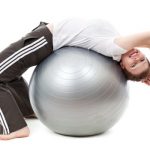Arthritis has always been perceived as a problem only for older people, but some 30% of the 8 million sufferers in the UK are under the age of 25.
Making sure that your diet contains certain food groups can be a powerful natural weapon in the continuing battle for pain relief. Arthritis doesn’t have to be a life sentence. The following lifestyle and dietary table is for guidance only and arthritis sufferers willing to change their diet should do so very gradually, after discussion with their GP, and ensure that all food groups are adequately replaced.
TRY TO AVOID
- Nightshade foods – e.g tomatoes, peppers, eggplant, white potato and margarine
- Dairy products including chocolate
- Dry roasted nuts
- Alcohol (wine), soft drinks and caffeine
- Additives, preservatives and chemicals
- Sedentary lifestyle
- Sulphur and methionine containing foods – e.g. cabbage, brussel sprouts, garlic and onions
REPLACE WITH
- Moderate amount of meat
- Oily fish such as salmon, mackerel, sardines and tuna for Omega 3
- fruits and vegetables, e.g. lettuce, peas, cabbage, apples
- Complex carbohydrates, e.g. brown rice, wholegrain pasta and wholegrain bread
- Vinegar and hot spices
- Dietary fibre
- Nuts such as almonds, brazil nuts and hazelnuts
- Water – try to drink a minimum of eight glasses a day
Plus gentle daily exercises, stretches and walks.
More
Very often there can be tightness in the front of your thigh and hip flexors (the quads / quadriceps muscles) which can cause your pelvis to tilt forwards as they are pulling on the front of it down towards your knees.
Test
- Make sure you are standing up completely straight and do not allow your pelvis or hips to twist or lean forwards
- Bring your leg behind you and grab the heel
- Pull the foot towards the buttock and see if you can get your heel to contact the buttock
- Check the other side for symmetry
Results?
If you cannot touch heel to bum without twisting, or you there is an uneven stretch, then either do the above as a stretch or speak to your Chiropractor for specific advice!
More
An NHS study revealed that half of us are affected by back pain and 8 million working days are lost due to work-related back pain each year. But here are many ways to avoid and ease back pain when working:
- Be aware of your posture; when standing try to distribute your weight evenly across the front, back and sides of your feet. When seated, sit up straight; align the ears, shoulders and hips in a vertical line as much as possible.
- Avoid prolonged positions; even a good sitting position can be tiring and put a strain on muscles. Try alternating sitting at the front of the chair with sitting back against it. Try to also get up and move about every 30minutes. Take 2 minutes to stretch, stand or go for a short walk, this will not only stimulate your muscles, but also your mind!
- Avoid unbalanced posture; such as sitting with your legs crossed, leaning to one side, hunching the shoulders forward or tilting the head up.
- Position your monitor at your natural resting-eye-height. This will avoid straining the neck as you look up or hunch down to your screen.
- Exercise regularly; a good combination of cardio and strength training will strengthen muscles and protect against back injuries.
- Get moving: the body was designed to move, and it is so important to keep moving. Even if you are suffering from back or neck pain, limiting movement will only exacerbate the symptoms. Try to do lots of gentle movement within a relative pain free zone, in order to prevent everything from locking up.
The most common cause of neck pain is when you hold your head forward for long periods of time. This places undue stress on the joints of the lower neck, as well as muscles of the neck and shoulders. By trying to pull the neck and shoulders back into alignment, and doing some nice gentle stretches for the neck and chest, you can easily correct this, before it becomes too problematic.
More
Could your wardrobe be causing you back pain?
From pencil skirts to skinny jeans, there are a range of everyday outfits that can be the cause for bad necks, painful backs and aching knees.
High heels
Wearing high heels more regularly than not can be bad for your feet and back. Hammer toes, bunions, shortened calf muscles; the list of ailments caused by wearing shoes with too high heels goes on, including circulation problems, knee damage and back pain. Eliminate damage by reducing the amount you wear high heels. Opting to wear trainers while walking long distances, such as to and from work, will help matters, as well as sticking to a small heel as much as possible.
Oversized bags
You may already be aware of the danger of lugging a heavy bag over one shoulder but did you know that carrying it in the crook of your forearm could be even worse? This one-sided lift can increase the risk of muscle strain and pain in the neck, shoulders and upper back and even trigger tension headaches. Top tips? Don’t overfill your bag, hold it by the handle or, if you must wear it over one shoulder, change sides regularly.
Skinny jeans
Wearing jeans that grip around the waist, hips, thighs and calves can reduce your mobility, even if it’s just walking that you’re doing. Restrictive clothing can lead to a loss of ‘bounce’ in your stride and the natural shock-absorbing qualities in your walk, causing pressure in your joints.
Pencil skirts
Tight trousers and pencil skirts can damage muscles and joints as much as high heels and heavy bags, leaving you in pain. Their straight-sided, slim fit clamps your knees together, making it harder to balance and bend. Wearing a tight skirt regularly could lead to a pulled muscle or even disc problems because of the limitations they put on your ability to move.
Heavy necklaces
Our necks have to struggle to cope with the strain of the weight of an average head (around 10lb to 12lb – roughly equivalent to five bags of sugar) day in day out, so adding a heavy necklace can really heighten the pressure. Not only this, wearing a heavy necklace also pulls the neck forward or backwards, away from its point of neutral balance. This can lead to neck tension and pain, and long-term could encourage a slouched posture and damage to the back.
Supportive Underwear
While wearing supportive underwear can have beneficial effects on your posture, as it acts like the compression clothing top athletes wear to improve performance by increasing blood and lymphatic flow, choosing the wrong variety will cause trouble. Wedging yourself into something too tight, which contains low amounts of flexible lycra will not only restrict breathing but, if it’s tight enough, also limit the movement in the middle of your body, placing abnormal loads on parts of your spine. Restricting movement to sections of your spine means that other parts have to compensate. This usually leads to pain and, ultimately, damage in your upper or lower back.
More
Inflammation: it’s a natural process that happens in our body to help us heal from injury and help our immune system fight off invaders.
But too much inflammation – or inflammation that lasts longer than it should – can be a problem. Most importantly for chiropractors, inflammation is a factor in many types of pain, including joint and muscle pain, arthritis, back pain, and pain from injury that won’t go away.
Inflammation overload also plays a role in other problems such as skin conditions, and even – in an ‘invisible’ form – in serious health conditions such as heart disease, diabetes and Alzheimer’s disease.
While there are many things that can contribute to too much inflammation, one factor we can control is what we eat and drink.
So, here are five food-related tips to help you keep inflammation at bay.
- Load up on colourful veg and fruit
Most vegetables and fruit have great anti-inflammatory properties, thanks to their unique ‘phytonutrients’ such as flavonoids and carotenoids. These compounds are often responsible for vivid colours of fruit and veg, so you’ll find tons of flavonoids in purples and reds (think red cabbage, berries and pomegranate) and lots of carotenoids in oranges, light reds, yellows and greens (e.g. carrots, squash, tomatoes, peppers, and dark green leafy veg such as kale and spinach). So, think about ‘eating a rainbow’ of veg and fruit: it’s not just a cliché, especially when it comes to beating inflammation.
Ideally, eat more vegetables than fruit, as the sugars in fruit can add up. And eat wholefruit rather than drinking it in juice form.

- Eat lots of oily fish
Oily fish are anti-inflammatory superheroes thanks to the omega-3 fats they contain.
Oily fish include salmon, sardines, mackerel, anchovies, herring, trout and fresh (not tinned) tuna. Aim to eat three servings a week of one or more of these fish to build up your omega-3 stores.
Plant omega-3s such as those found in flaxseeds and chia seeds and their oils don’t have exactly the same benefits, as they provide a different type of omega-3. But they’re still healthy choices to include in our diet, and can be a substitute if you can’t eat fish.
- Keep it ‘real’
Generally speaking, the less you rely on processed foods, and the more you eat ‘real’ foods, the better.
‘Processed’ foods tends to mean anything that’s been made in a factory instead of being brought to you fresh or simply packaged. As well as junk foods, think supermarket baked goods, processed cheeses, most breakfast cereals, packet soups and ready meals. Not only are they generally low in natural vitamins, minerals and anti-inflammatory nutrients, they often contain added sugar or salt, as well as chemical additives that may do us more harm than good.
‘Real foods’, on the other hand, include vegetables and fruit, whole grains such as brown rice, beans and lentils, unroasted nuts and seeds, and minimally processed animal foods such as eggs, fish, whole cuts of meat and pure cheese or milk.
- Switch your vegetable cooking oils
It is best to switch all refined cooking oils such as sunflower oil and pretty much anything just labelled as ‘vegetable oil’ for more healthy options.
But how can they be bad for us, when they’ve long been touted as a healthy alternative?
Well, one problem is that polyunsaturated fats in their refined liquid form are quite fragile. When they’re heated to high temperatures during the refining process and cooking, they can easily become damaged. These damaged molecules may trigger more inflammation or ‘free radical’ damage in our own bodies when we consume too many of them.
The second problem is that vegetable oils tend to contain a very high proportion of omega-6 fatty acids. Now, while these areessential fats, when we get a lot of them in our diet they can have an overall pro-inflammatory effect (i.e. encouraging inflammation), especially when we’re getting a lot more omega-6 than omega-3 fatty acids.
So what can you use instead of vegetable oil? Well, a good choice for cooking is coconut oil. It contains primarily saturated fats, which – contrary to what you might think – are actually the safest and healthiest fats for high-temperature cooking such as roasting, frying or stir-frying, as they’re stable and have a high smoke point.
Olive oil is a great option for lower-temperature sautéing and for drizzling on salads or using in dressings. Olive oil is made up primarily of monounsaturated fats, which are more stable than polyunsaturated, and has been linked to numerous health benefits – for our heart in particular.

- Spice it up
Many spices have natural anti-inflammatory activity, with winners including turmeric and ginger. Add them liberally to homemade curries and Asian dishes (use coconut oil rather than vegetable oils, of course!). Make them into hot drinks, such as homemade turmeric latte or fresh ginger tea; or find them in the form of herbal teas.
Tip: if you’re buying powdered spices, seek out organic rather than just settling for your average supermarket version for the greatest benefits. And note the colour of your turmeric: it should be an almost fluorescent orange-yellow colour if it’s a good-quality one.
More
Beat the post Christmas Blues and join Sophie in RED January!
Usually we post challenges in the clinic for you all but we want you to know that we are always setting ourselves new challenges too. This year Sophie is taking on RED January and for those that have no idea what that is; RED stands for Run Every Day… It is organised by the mental health charity MIND and is free to take part in, but donations are welcomed from participants.
The aim of the challenge is to be more active every day in order to improve your mental health; Sophie would NOT recommend running every day if you are new to running but it can be a walk, exercise class, swim, bike ride –absolutely anything active!
Why not try joining Sophie in being more active each day during January and don’t forget to ask her how she’s getting on –I’m sure she’ll appreciate some encouragement, Sophie has set herself a minimum of 2Km (just over a mile) each day and she’s hoping it’s not too icy underfoot this month.
Why January?
- Expensive Christmas? RED is free to take part
- RED provides a goal and focus to help you through a characteristically tough month
- People can feel isolated and pressured to achieve New Year’s resolutions. RED is a no pressure movement fuelled by community spirit.
- RED empowers, educates and supports people to start the year as they mean to go on, forming healthy habits to continue beyond January.
More info: www.redtogether.co.uk
More
Don’t launch yourself into a new exercise regime without taking the necessary precautions to prevent back and neck pain…
While more exercise can in fact improve bone mass density and prevent osteoporosis, throwing yourself into a full-on physical programme after a lull in activity could put your back and neck at risk. Try introducing your body to exercise in a safe way by following these easy tips:
Preparation
- Before you begin any exercise programme, check that there are no medical reasons why you cannot carry out the activity, particularly if you are not used to the type of exercise
- Make sure you wear the right clothing while carrying out your chosen activity. Wearing clothes that are too tight could constrict your movement and lead to injury; appropriate footwear is a must for any type of exercise
- Make sure you warm up before exercises; don’t go straight in and start with lighter movements like walking or jogging to lessen the chance of muscle strain
Equipment
Ensure that you are using equipment properly to prevent injuries.
Weights
- make sure legs are at least hips width apart
- lift with bent knees
- never keep knees straight, as this could lead to over-stretching and cause damage to your back
- work with weights closer to your body to help avoid injury
Machines
- make sure the seat is positioned correctly for your height
- avoid stooping or reaching when using equipment or you could over stretch your back
Stretching
Stretches and exercises designed to strengthen your back will help prevent injuries later on. Try sequences of precise, slow stretches, which will help build up your strength.
More
Choosing a balanced diet containing the right vitamins and minerals decreases our chances of developing deficiencies later on in life. The  body’s structure relies on vitamins and minerals to ensure muscle tone (including the heart), healthy functioning of nerves; correct composition of body fluids; and the formation of healthy blood and bones.
body’s structure relies on vitamins and minerals to ensure muscle tone (including the heart), healthy functioning of nerves; correct composition of body fluids; and the formation of healthy blood and bones.
A Healthy Diet Plan
Calcium
For bone, muscle and joint health try and include Calcium in your diet, which is essential for optimal nerve and muscle function and blood clotting.
Obtained from
Dairy products are rich in calcium that is easy to absorb. Non – dairy sources with equally absorbable calcium are green leafy vegetables from the kale family. Spinach, rhubarb, sweet potatoes and dried beans are rich in calcium but from these foods it’s not easily absorbed
Magnesium
Required for efficient muscle contraction and conduction of nerve impulses. Low magnesium levels in the body can affect the body’s calcium levels, putting bone health at risk.
Obtained from
Green leafy vegetables, unrefined grains and nuts. Small amounts are present in meat and milk. Large quantities of fibre in the diet and low protein intake can reduce the amount of magnesium able to be absorbed by the body.
Vitamin D
Essential for regulating the formation of bone and the absorption of calcium from the intestine. Vitamin D is a fat-soluble vitamin that functions to help control the movement of calcium between bone and blood.
Obtained from
Primarily from the action of UVB light on the skin. Food sources such as cod liver oil, sardines, salmon, tuna, milk and milk products contain small amounts of Vitamin D.
Vitamin C
The structure of bones, cartilage, muscles and blood vessels is provided in part and maintained by collagen. The formation of strong efficient collagen requires Vitamin C.
Obtained from
Citrus fruits, berries, tomatoes, cauliflower, potatoes, green leafy vegetable and peppers. Also important for producing strong collagen and therefore strong bone structure, is Folic acid. Folic acid is found in cereals, beans, green leafy vegetables, orange and orange juice
Antioxidants
Vitamin C is also a strong antioxidant and is capable of regenerating other antioxidants like vitamin E. The role of antioxidants is to mop up free radicals (the by-products of normal metabolism). Excessive amounts of free radicals cause damage to joint surfaces and muscle cell regeneration. Antioxidants reduce the potential of these free radicals to cause joint damage.
Obtained from
Antioxidants are vitamins A, C, E and the mineral selenium and are present in fruits and vegetables, the highest quantities are found in the most deeply and brightly coloured. Cartilage that lines the articulating surfaces of all joints is critical to joint health. Cartilage is the shock absorber of joints and is continually rebuilt if a source of raw materials is available. Supplements such as glucosamine sulphate can be added to a healthy diet to assist joints that maybe showing signs of wear and tear.
Essential fatty acids
Essential fatty acids (EFA’s) also reduce the degenerative changes in tissues and cells. EFA’s are unsaturated fatty acids such as Omega 3. They aid in decreasing the inflammatory response and help relieve pain and discomfort in joints and muscles.
Obtained from
EFA’s can be found in oily fish (sardines, fresh tuna, mackerel), flax seed and linseed.
Foods to avoid…
There are certain foods and substances that adversely effect the body’s use of minerals and vitamins. High saturated/animal fats, refined foods, white flour, white sugar, white rice, chocolate, carbonated drinks and fruit juices with high sugar concentration should be kept to a minimum if not weaned from the diet completely. Meat and dairy products should be kept within a recommended weekly amount. Dairy products as calcium sources should be varied with other non-dairy sources.
More
If you’re following the trends in exercise and fitness, you’ve probably heard the phrase “core strength” or “core stability.” These terms refer to the muscles of your abdominals (stomach) and back and their ability to support your spine and keep your body stable and balanced, helping to prevent back pain.
The core muscles lie deep within the trunk of the body. They generally attach to the spine, pelvis and muscles that support the scapula. They stabilise these areas to create a firm foundation for co-ordinated movement of the legs and arms.
Core stability is also needed in everyday life, helping to keep you fit and to prevent injury when you are lugging those heavy shopping bags or doing the ironing. Rises in back pain incidence have been linked to the sedentary lifestyle that many of us lead. How about neck and shoulder pain? Time spent hunched over the desk instead of getting out and about can mean that we don’t pay enough attention to posture, and the muscles of those crucial “corset” muscles.
To strengthen your core stability:
- Start by lying on your back with knees bent.
- Your lumbar spine should be neither arched up nor flattened against the floor, but aligned normally with a small gap between the floor and your lower back. This is the “neutral” lumbar position you should learn to achieve.
- Breathe in deeply and relax all your stomach muscles.
- Breathe out and, as you do so, draw your lower abdomen inwards as if your belly button is going back towards the floor.
- Hold the contraction for 10 seconds and stay relaxed, allowing yourself to breathe in and out as you hold the tension in your lower stomach area.
- Repeat 5-10 times.
Bear in mind the following points:
- Do not let the whole stomach tense up or your upper abdominals bulge outwards, as this means you have cheated by using the large rectus abdominus muscle (the six-pack).
- Do not brace too hard; just a gentle contraction is enough. Remember it’s endurance not max strength your are trying to improve.
- Do not tilt your pelvis nor flatten your back, as this means you have lost the neutral position you are trying to learn to stabilise
- Do not hold your breath, as this means you are not relaxed. You must learn to breathe normally and maintain the co-contraction.
- Use your fingers for biofeedback on either side of your lower abdomen to feel the tension.
Once you have mastered the abdominal hollowing lying on your back, practise it lying on your front, four-point kneeling, sitting and standing. In each position get your lumbar spine into neutral before you perform the hollowing movement. If you feel any pain or discomfort while doing these exercises, then stop immediately and seek medical advice before continuing.
More
For us to maintain the very high standard of service, care and support for you, we will be restructuring and slightly increasing clinic fees from April 2019:
Chiropractic
Treatment Adult £36, Child (under 16 years) £30
Double appointments £50
New Patient Adult £52, Child (under 16 years) £40
Massage therapy
One hour £40 (concessions £35)
Half Hour £20 (concessions £17:50)
More




 body’s structure relies on vitamins and minerals to ensure muscle tone (including the heart), healthy functioning of nerves; correct composition of body fluids; and the formation of healthy blood and bones.
body’s structure relies on vitamins and minerals to ensure muscle tone (including the heart), healthy functioning of nerves; correct composition of body fluids; and the formation of healthy blood and bones.